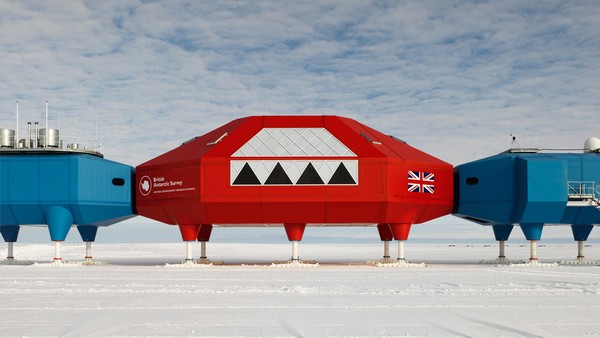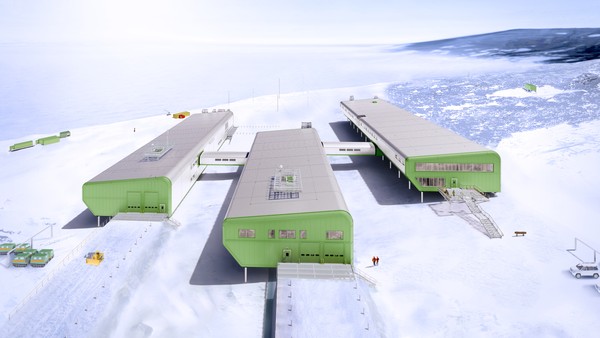Cool news
9 January 2020
The 21st century has seen a surge in innovative architecture in the Polar regions – architecture that is not only beautiful but also meets the rising needs of the scientists living and working within the buildings. In the New York Times article “The Coolest Architecture on Earth Is in Antarctica” you can read about some of the leading architectural practices designing research stations for one of the harshest environments on the planet, including Hugh Broughton Architects.
Hugh Broughton Architects’ design of the Halley VI Research Station has received worldwide acclaim, and is seen by many as a project that provoked a new way of thinking. As it says in the article:
“Mr. Broughton, who is currently in Antarctica designing New Zealand’s Scott Base, noted with interest ‘how the approach to these projects has changed so dramatically in such a short period of time.’ His peers are quick to credit him for much of that change. As Mr. Buecking put it, ‘when the U.K. built Halley VI, many nations realized the importance of doing something special, and not just doing something.’”
You can read the full article on the New York Times website.
More news

News 17 October 2025
RIBA Reinvention Award Winner
Sheerness Dockyard Church has won the prestigious RIBA Reinvention Award for the best adaptation of an existing building in the UK. The jury said "This is a powerful example of heritage-led regeneration, a project that reinvigorates history while equipping a community with space and purpose.”

News 8 October 2025
Critical work
We are working with the Australian Antarctic Division within the Antarctic Infrastructure Renewal Alliance to upgrade critical infrastructure at Davis station. The work includes a new three storey utility building providing vehicle and trades workshops, engineering offices and a main powerhouse.

